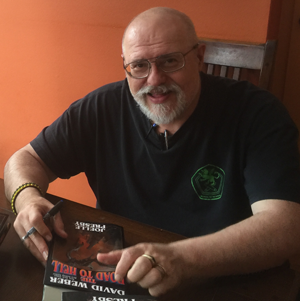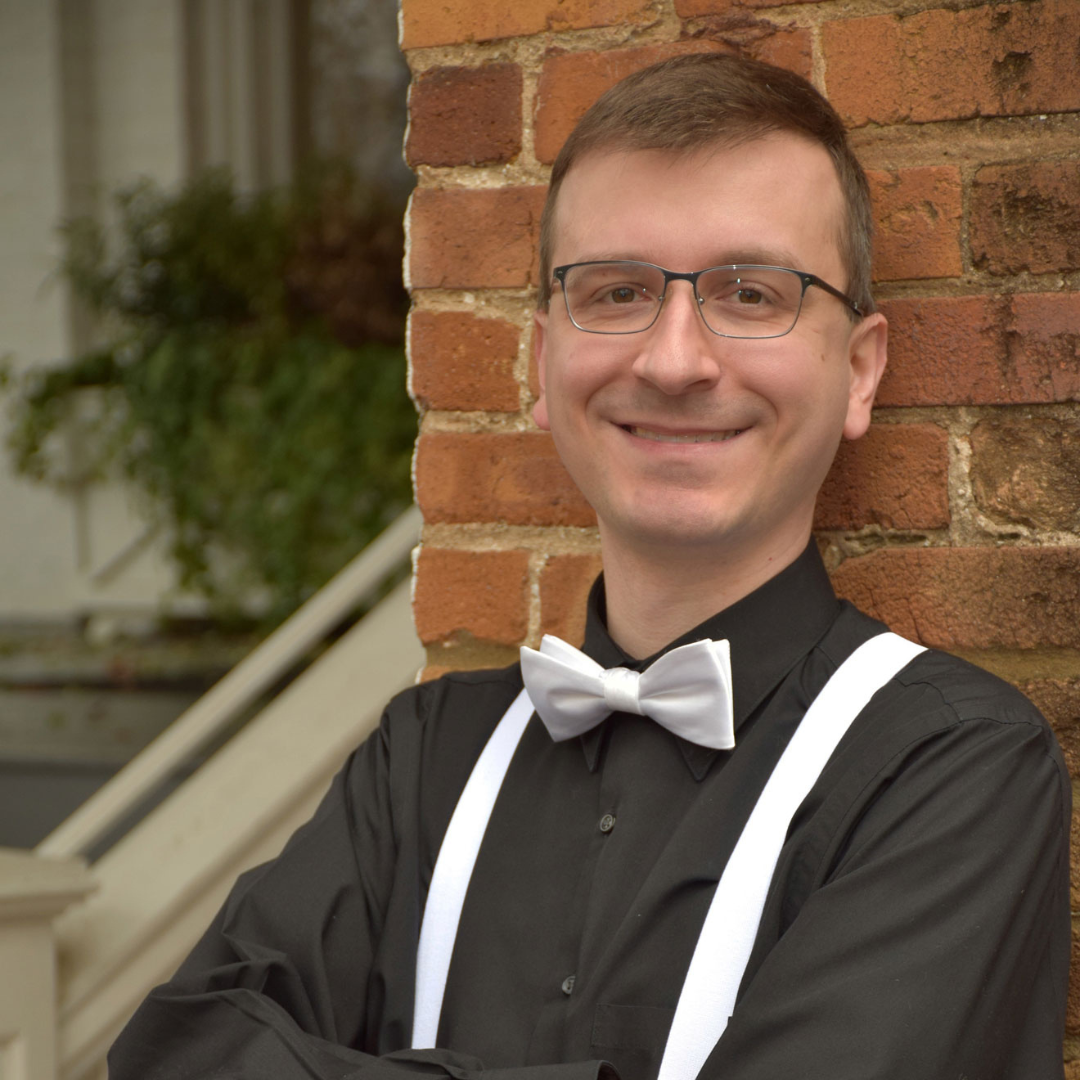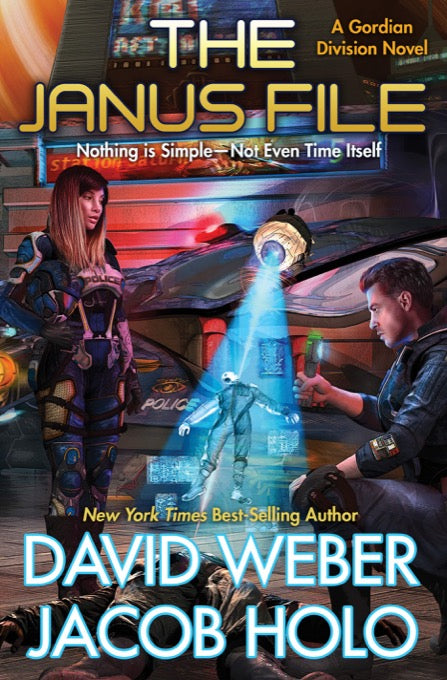
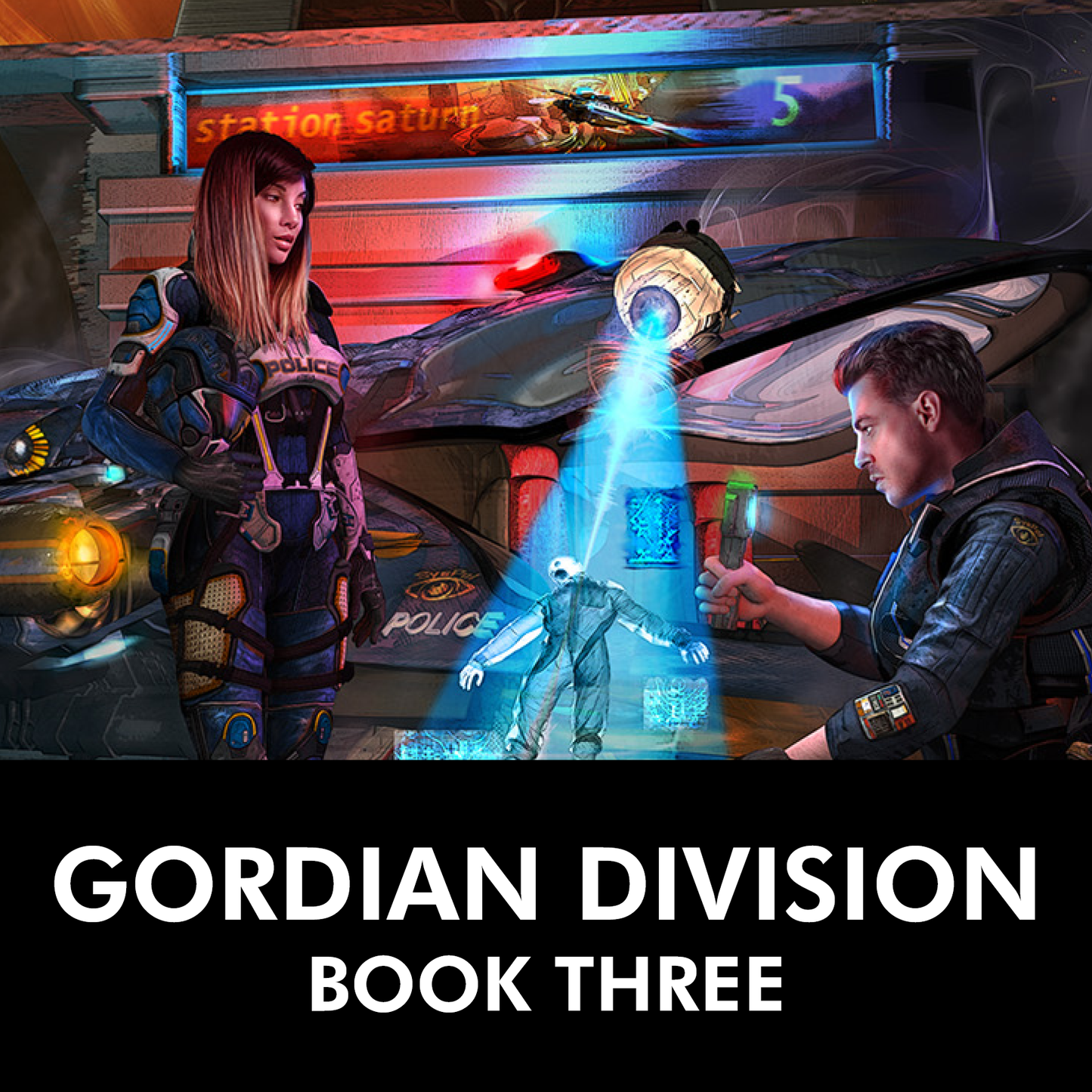
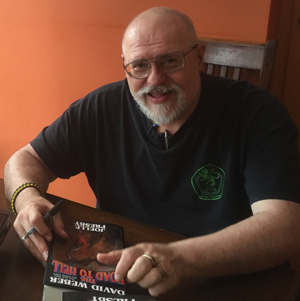
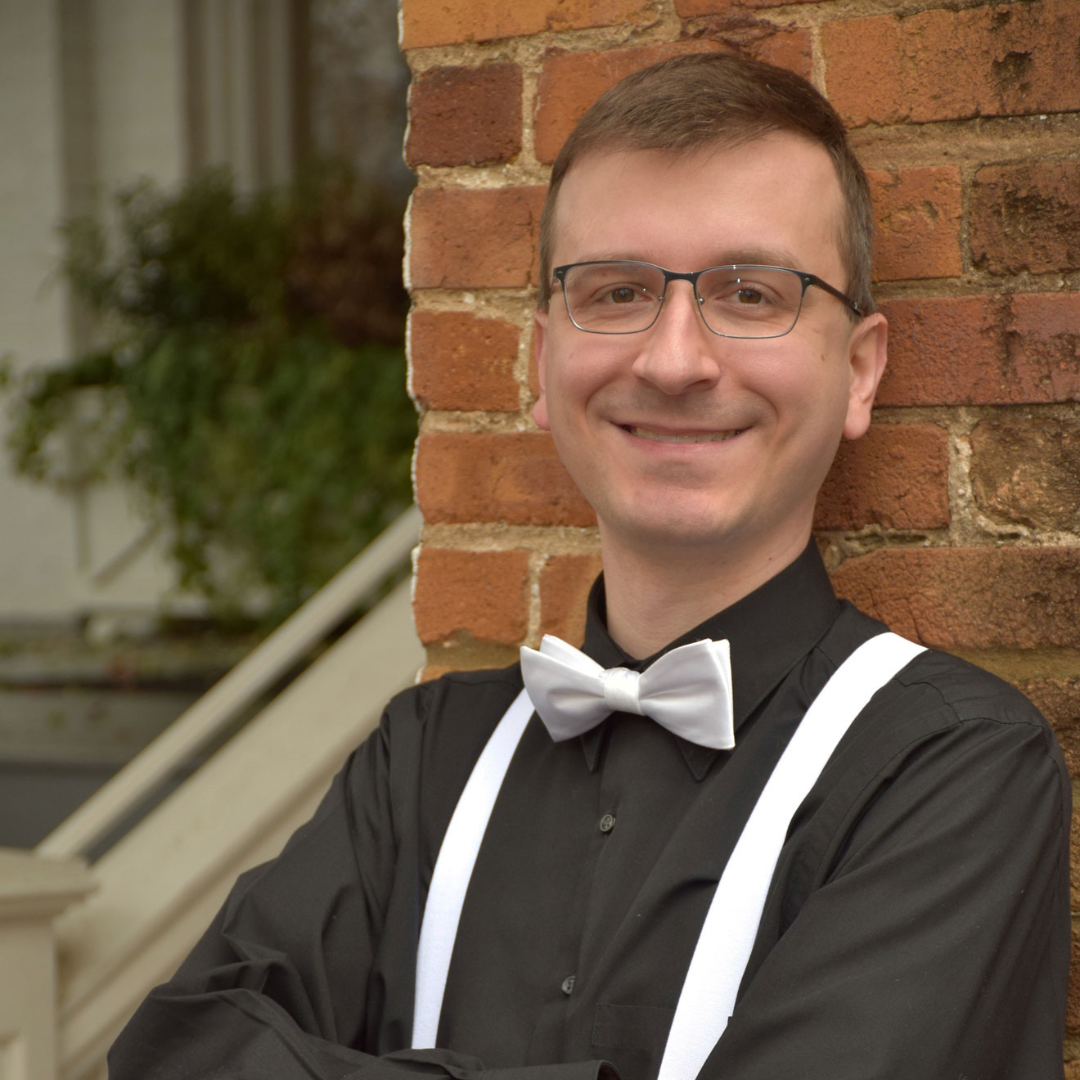
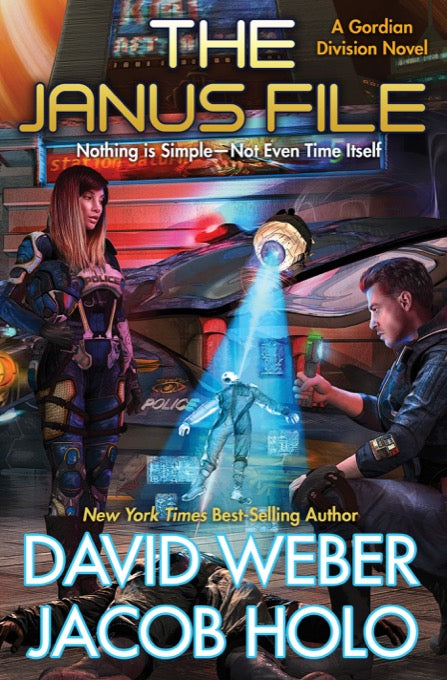
Book Three in the Gordian Division series. Published by Baen Books.
About this premium SIGNED MASS MARKET PAPERBACK:
Signed by both David Weber and Jacob Holo. Contact us at holowriting (at) holowriting.com for personalization requests.
Prefer a different format? Click here.
THE FATES OF UNIVERSES AREN’T THE ONLY THINGS TIME TRAVEL CAN IMPACT
It was supposed to be a routine trip for the members of the Gordian Division, both human and AI: fly out to Saturn, inspect the construction of their latest time machines, then fly back.
But when the division’s top scientist and chief engineer are killed in the same freak accident, suspicions of foul play run deep. Detective Isaac Cho is sent in to investigate, but he has more on his mind than just a new case. His superiors have saddled him with an exchange officer from the neighboring Admin—Special Agent Susan Cantrell—whose notion of proper “law enforcement” involves blowing up criminals first and skipping questions entirely.
Despite his objections, Cho is stuck with an untested partner on a case that increasingly reeks of murder and conspiracy. The unlikely pair must work together to unravel this mystery, and soon they discover their unique combination of skills might just provide the edge they need.
But nothing is ever simple where the Gordian Division is involved.
Not even time itself.
⭐⭐⭐⭐⭐
“. . .moments of humor amid the expected culture clashes, and the exploration of the authors’ well-realized far-future world. . .It’s pure entertainment.” —Publishers WeeklyThis product is a premium mass market paperback novel.
Prefer a different format? Click here.

Enjoy a sample from THE JANUS FILE
BACKGROUND OF EXOTIC PLACES
Saturn is the most beautiful planet in the whole solar system, or so those who live on it claim. Certainly, the ornate majesty of its many splendid rings bejewels the gas giant in ways no other planet can match, and its plethora of richly varied moons provide suitable dance partners to such a lavishly decorated debutante.
But beauty alone did not bring humanity to Saturn. Matter and energy did, and by those measures, Saturn and its flock of moons bask in decadent wealth. Fortune seekers cannot claim that wealth as easily as the riches within the comfortable and familiar gravity well of Earth, but countless treasure troves exist for those with the will to seek them.
And seek them humanity has.
As we approach the fourth millennium, humanity’s fingerprints have spread across the solar system, and even beyond. The terraforming of Earth’s only moon has already been completed, and ambitious terraforming projects toil within the atmospheres of Venus and Mars, gradually transforming those worlds, as well. Great machines loom over the planet Mercury, ready to transform the airless rock into a solar-collecting swarm around the Sun…if the legal hurdles are ever fully cleared. Artificial habitats and great vessels dot the solar system from one end to the other, and the light and data of a thriving society fill the vacuum between worlds.
By comparison, Saturn and its moons appear much as they have since ancient times. Naturally, given the extent of humanity’s expansion, a wide variety of technological constructs orbit the gas giant, and cities and facilities of varying sizes are sprinkled across its moons. The largest of them is the dome of Promise City, situated at the heart of a cluster of gargantuan machines on the cold, shrouded moon of Titan, where the nitrogen-rich atmosphere and lakes of liquid methane have barely been touched by local terraforming efforts.
These and many others might be expected, but a closer examination of Saturn’s environs reveal more striking changes. For one, the co-orbital moons of Janus and Epimetheus, once famous for swapping orbits every four years, are gone, replaced by a wide shoal zone interspersed with massive industrial printers and mobile factories maneuvering around the skeletons of active construction projects. The resources of the Atlas Shoal are a pittance compared to the original mass of the two devoured moons, but to see the results of that grand labor, one must travel into the atmosphere of Saturn itself.
Specifically, to the cloud band at plus forty latitude, which enjoys relatively calm weather on a planet known for its fierce winds. There one may spy a speck of white floating amongst the clouds. Travel a little closer, and the immense scale of the object quickly becomes apparent.
Locals call it the “Shark Fin,” for the megastructure does indeed resemble the downturned fin of a colossal aquatic monster. The official designation is Janus-Epimetheus, named in honor of the two moons sacrificed to its construction, and often shortened to simply “Janus.” Its outer surface is a pristine white, and its rounded bow cuts through tan clouds of ammonia ice near the top, and reddish-orange thunderheads of ammonium hydrosulfide near the bottom. In total, Janus measures one hundred kilometers in height and two hundred kilometers across the widest point of its flattened, oval crown. Natural gravity is a pleasant 1.065 times Earth’s, and external pressure near the top is roughly one atmosphere.
Janus does not travel through this sea of golden and rust-colored clouds alone, but it stands above the rest for being the largest and most ambitious habitat by far. Over a billion physical and abstract citizens call Janus their home, for this is the thriving heart of the Saturn State, as well as its seat of governance.
The shining towers of Ballast Heights, capital city of the Saturn State, sprawl atop the Shark Fin’s crown, close to and a little behind the prow. Almost every building’s cross section takes the form of an elongated teardrop when viewed from above, allowing the city to weather the windy seasons with minimal fuss.
Three towers stretch skyward above the rest, their upper levels coated in dozens of giant dishes and precision lasers shielded behind glass domes to protect the equipment from gusts of wind. All of the dishes and lasers point toward the heavens, and data packets and abstract citizens alike come and go through these transceiver towers in a continuous ballet of photons and electrons. Each tower’s infostructure buffers thousands of connectomes at a time, the digital minds of these citizens paused for a short interval as they await transmission off-world, while separate infostructures accept the new arrivals by placing them in a run-state before staff welcome them cordially to Janus.
All of this is routine on the worlds of the Consolidated System Government. Boring even. But only because we at LifeBeam turn the extraordinary into the everyday.
A virtual banner flutters behind the pinnacle of one of these three towers, declaring our company’s name in bold, electric blue letters while our slogan of TRAVEL LIGHT! hovers below.
The physical mechanisms of our infostructure stretch from the top of the tower all the way down to the lowest subbasement in a solid column of robust computational engineering. Redundant systems work in trios, constantly checking and rechecking not only their own work, but that of their neighbors, and emergency backups stand ready to activate within moments in the event of a catastrophic failure.
The tower’s systems are drastically—one might say obsessively—overengineered against any conceivable failure. They have to be, for their cargo is life itself.
—A LifeBeam Travel Guide to Saturn
***
PROLOGUE
Eighty-three light-minutes from Saturn, a construct far smaller than Janus but still impressive orbited the planet Earth. The dark blue hull of Argus Station took the form of a fat cylinder, and over nine million officers of the Consolidated System Police worked on or from there, including the heads of the six specialized divisions that supplemented the rank and file.
Gordian Division was the newest addition, having been formed less than eight months ago after a calamity known as the Gordian Knot had almost destroyed sixteen universes, including the one the citizens of SysGov called home. The division, charged with enforcing time travel and transdimensional laws, might have been small compared to the more established elements of SysPol, but the monumental challenges before them—and a clear understanding of the countermeasures those challenges required—had led to the division’s rapid growth.
Several levels near Argus Station’s south pole had been allocated to the Gordian Division, having stood empty for several decades, and much of the space had already been filled with offices, labs, engineering bays, and hangars for time machines called TTVs or transtemporal vehicles. This influx of personnel brought with it the side effect of attracting clusters of civilian businesses eager to support the new division—
—and make a little Esteem in the process.
LifeBeam was one such business, and a newly constructed transceiver tower descended from Argus Station’s south pole for the exclusive use of Gordian Division abstract and synthetic personnel. The company had constructed an expansive waiting lounge at the tower’s base, far larger than was required for current traffic levels, but perhaps this was an investment in what many saw as Gordian Division’s inevitable rise in the future.
Two men sat on a couch near the outer wall with a virtual image displaying the blue globe of Earth beneath their feet. These two men, the chief scientist and lead engineer of Gordian Division, were the only occupants of the lounge, and both were oblivious to the crime that was about to happen.
“Time.” Doctor Andover-Chen said the single word with a grand gesture of his arms as faint mathematical equations danced under the glassy skin of his synthoid body.
Joachim Delacroix looked over with a perplexed face. His own synthoid was externally accurate to his original human body, complete with freckled face and unruly reddish-blond hair. Both men wore the gray-green uniforms of Gordian Division with golden eye and sword flashes at the shoulder.
“What about it?” Delacroix asked finally, not sure what to expect from the eccentric scientist.
“Where does the arrow of time come from? What force drives it forward?”
“Are you asking me?”
“It’s more a question to myself, but if you’d like to take a stab at it, I wouldn’t mind.”
“What brought this on?” Delacroix dodged.
“I find myself with time to think,” Andover-Chen explained. “And so I wonder, why do I have time to think?”
“Are you really that bored?” Delacroix checked a timer in his virtual vision. “We’ve only been here twelve minutes.”
“Twelve minutes. And what are those, really? Why does the universe even need time? Why not exist simply as a collection of spatial dimensions?”
“I don’t know, but it’d be pretty boring without it.”
“Or perhaps two dimensions of time?” Andover-Chen mused. “Why can’t time be structurally like a sheet instead of a line? And why only one direction?”
“Sorry, but you’re outside my specialty. I just do impellers.”
“And that’s exactly my point.”
“It is?” Delacroix raised an eyebrow, not sure where his colleague was going with this.
“Why, yes.” The scientist turned to him. “We travel through time. We bend the chronotons around us to our will. But do we really understand the fundamental nature of time?”
“Well, if you don’t, then none of us do.”
“And so”—Andover-Chen spread his arms once more—“I find myself wondering about time.”
“I think I have a pretty good grasp on what twelve minutes is.”
“As do I.” Andover-Chen’s expression turned sour, and he crossed his arms and leaned back on the couch. “Are they ready for us yet?”
“I think they’re still waiting for the last transit confirmation.”
“I wish they wouldn’t call us in here until they’re ready. If there’s one thing about time I’m sure about, it’s that I loathe wasting it.”
“That makes two of us,” Delacroix agreed.
“By the way”—Andover-Chen knuckled him in the shoulder—“is it just me, or have you been in a better mood lately?”
“You think so?” Delacroix asked.
“Yes. I started noticing it after we returned from Saturn the last time.”
“Oh.” He thought on this for a moment. “Yeah, I guess you’re right.”
“Any particular reason?”
Delacroix hesitated.
“Sorry,” Andover-Chen said. “I didn’t mean to pry.”
“No, it’s all right.” He sighed. “I’ve just had a lot on my mind recently. Been going around feeling like my head isn’t screwed on straight, you know?”
“Oh, I know how that can be sometimes.” Andover-Chen flashed an encouraging smile.
“I guess it’s just…” Delacroix hesitated again, then nodded. “It’s just that I’ve experienced a lot of trouble coming to terms with Selene’s death.”
“Of course, you have. That’s only natural.” The scientist nodded knowingly. “Ah, Selene. I wish I’d known her better. She must have been a remarkable woman, given what you’ve told me.”
“She was,” Delacroix agreed. “Better than I deserved. And as painful as it’s been waking up without her every morning, I think I’m finally coming to terms with life without her.”
“Good for you.” Andover-Chen clapped him on the shoulder and gave it a gentle squeeze.
“I’m not done healing. Not by a long shot. But I do feel like I’ve made the first significant step forward in months. In a way, this is the first time I’ve felt even close to normal since she was killed.”
“Well, you look the part, take it from me.”
“Thanks.” Delacroix gave him a half smile. “You want to know the trick I came up with?”
“Sure. Let’s hear it.”
“I asked myself if Selene would be proud of the way I’ve been acting recently, and the answer was no.”
“That seems rather harsh.”
“But it’s the truth. I’ve been yearning for something I can’t ever have again.” Delacroix shook his head. “And that’s no way to live. I have to heal, and the only way to do that is to first accept my new reality.”
“Too true.” Andover-Chen sighed. “Still, the healing process is a long one.”
“But I’m confident that time”—Delacroix’s eyes twinkled with mischief—“will heal my wounds.”
Andover-Chen laughed.
A three-note chime played across their virtual hearing.
“Will Doctor Andover-Chen and Chief Engineer Delacroix please head to Outbound Transmission? The last of your relay confirmations just came in.”
“It’s time to go.” Delacroix stood up.
“And so it is.”
The two men headed through the open arch marked OUTBOUND where LifeBeam technicians guided each of them into separate caskets. Delacroix clicked through the virtual prompts to authorize the suspension and transmission of his connectome, then eased down flat and closed his eyes. The top sealed him in, and he willingly placed his connectome into a paused state.
The casket’s infostructure interfaced with his synthetic body, extracted the connectome, and moved it to a data buffer awaiting outbound transmission along with Andover-Chen’s. A crane retrieved their caskets, now with dataless synthoids, and stored them in a secure holding area for when the two would eventually transmit back to Argus Station.
The outbound transmission laser locked onto a target reception dish on a LifeBeam relay station two light-seconds away. Both sides had confirmed the transmission timing and coordinates. A clock ticked down to zero, and a precision laser fired the two connectomes to the relay station.
The two Gordian connectomes passed through eight more relay stations before arriving at Kronos Station, the SysPol headquarters orbiting Saturn. There, the same process played out between the LifeBeam tower on Kronos and the one rising above Ballast Heights.
Both sides confirmed the timing and coordinates, a timer reached zero, and a final laser fired the photons of Andover-Chen and Joachim Delacroix down to the Janus megastructure.
But an unexpected maintenance routine activated in the reception dish, forcing a shutdown of the primary infostructure as well as the two secondary support infostructures. Backup systems detected the fault within nanoseconds and immediately initiated recovery procedures, but the shutdown process refused all commands to abort.
With all three systems in control of the dish unresponsive to external commands, backup systems initiated an emergency purge of the infostructure and restored all code to default. This process would take three whole seconds, after which the dish would be restarted and normal operations could resume.
But it was already too late.
Andover-Chen and Delacroix arrived less than a second after the dish shut down, and the photons of their minds rebounded off the inert collection dish and scattered into the clouds of Saturn.



